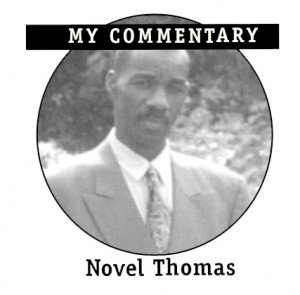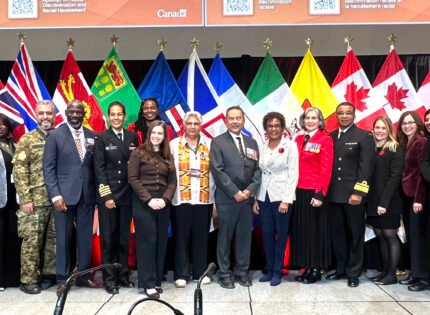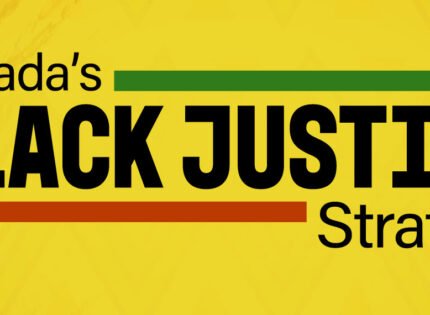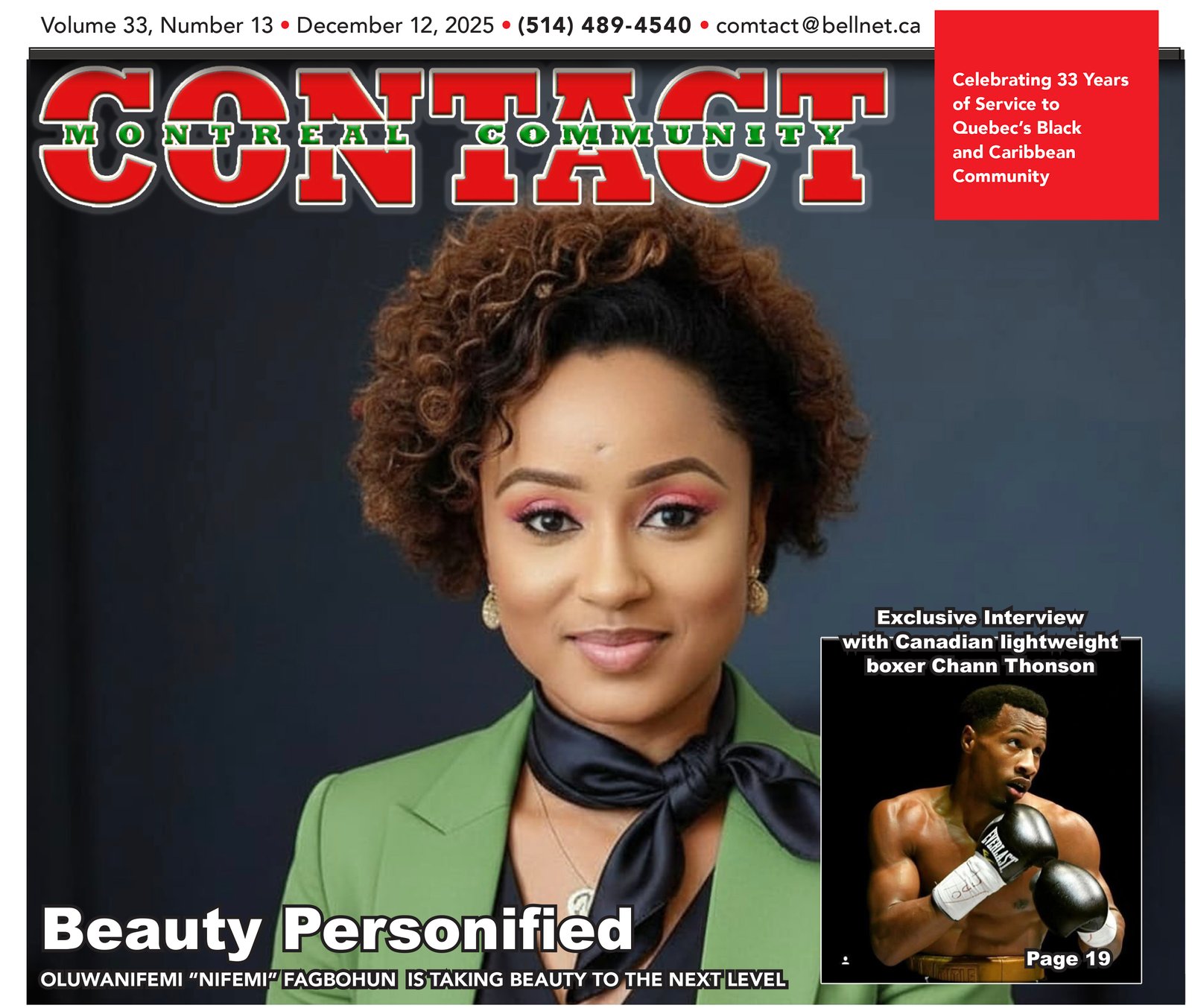 AFFLICTING THE COMFORTABLE, COMFORTING THE AFFLICTED
AFFLICTING THE COMFORTABLE, COMFORTING THE AFFLICTED
Many people think, are even convinced, that racism stops at the 49th parallel. That when it produces its passport and reasons for wanting to enter Canada there’s a swift rebuttal: entry denied.
The difference between the USA and Canada is the old cliché, “their form of racism is blatant; in Canada it’s more subtle.” As if there are different ways of gauging the repugnant institutionalized practice and its manifestations. Furthermore, inasmuch as there weren’t any cultivation of Poplar trees, or establishment of a slave industry in Canada, it still engaged in “peonage léger.” The who’s-master-and-slave ideology seeped into Canada’s ethos. The evidence is ubiquitous, not necessarily tangible, but is often perceived and palpable.
As an ole timer used to say at apropos moments, “Racism is like cancer, you don’t always know that you have it.” But the victims can sense it.
Full disclosure, I don’t have it (a racist bone or blood in my constitution), but whenever I’m out in public I naturally become a potential victim of some people’s nurtured (racist) behaviour – akin to spontaneous combustion – which could be manifested at any moment, just because by virtue of hue in society, it has become institutionalized: socially embedded, the norm.
That racial superiority… racist animus was again front and center – even going international – when President Donald Trump (many see him as a primary proponent and lynchpin of the demographic and social discontent and divisiveness) did what he does best, create controversy by referring to Black NFL players as sons of bitches, all because they exercised one of their (2nd Amendment) Rights and took a knee… rather than stand for the singing of the American National Anthem. It was the players’ way of illuminating some longstanding racial and other social issues that continue to negatively impact African Americans, especially Black males.
And the name Colin Kaepernick, former NFL quarterback, and initiator of the “knee” protest, blew up in the media, aided and abetted by said president in a Birmingham, Ala. speech, which got tongues wagging… some supporting, others loathing both men.
Just like many historic Black sports icons that have taken a stand on various deep-rooted socio-political issues over generations (the Internet is now an invaluable window and source relative to those who have literally stood up, or sat down, for one or multiple reasons).
Now Kaepernick is been castigated, has been blackballed… blacklisted, essentially pushed to the sidelines, right off the field, where he’s still waiting for a phone call from any interested team/owner.
The takeaway? Black athletes must understand that engaging in socio-political activism come at a price and with risks.
For its part, the NHL finally issued a statement on its athletes “taking a knee” during the play/singing of the national anthem. To no one’s surprise, players have remained mum on the issue. Understandably. Into 2017, given the dirth of Black players in the league, each is probably looking at the other to see who, if any, will make the first move.
Hockey doors are still not wide open to Black players; maybe it’s a deliberate position of a generally conservative ownership/management group to ensure that hockey remains a quote “white sport,” the last bastion of major North American sports leagues that (tacitly) prevents an influx of so-called “people of colour.” They would be “Too Colourful For The League” to borrow the title of the late Herb Carnegie’s autobiographical book that speaks to his dream of making it to the NHL.
In a March 2015 article on the life of Herb Carnegie and his NHL aspirations, one David Engel wrote, “[…] Lesser known are the players born too early to realize their own sporting dreams – ultra-skilled athletes who had the talent, but lacked the appropriate skin tone. Herbert H. Carnegie was one of legions of sportsmen bound behind the color line and made to suffer through such institutional racism… Carnegie, was an ice hockey superstar – an extraordinary talent buried in the minor leagues… one of the most gifted Black players to ever lace up a pair of skates is a fact, but such a distinction means little when you consider what he could have been if he’d had the opportunity…”
Engel continues, “As a teenager, the Montreal Canadiens Hall-of-Fame center Jean Béliveau was so eager to learn from Carnegie that he raced to games to watch him play. Years later they would become minor league teammates before Béliveau was promoted to the NHL. (Apparently Montreal Canadiens’ Sainte Jean Beliveau was one of Carnegie’s greatest admirers but his colour put him at a disadvantage.) It was a familiar theme for Carnegie: wherever he played during his 14-year career, many moved on to play in the big show. He stayed behind.”
In the multiple articles on Herb Carnegie, one headline reads, “The best Black hockey player to never play in the NHL…”
The ideology of the League in the 21st century is not far-removed from the 1930s… and 40s… when young Black hockey players with NHL dreams were destined to languish in hockey arenas, or skate on outdoor spaces because they loved the game too. Much as many of them do today.
And Carnegie was subjected to racist taunts like “Get the Black bastard!” as some of the handful of the Black NHL players are today: racial taunts, objects thrown on the ice…
Herb Carnegie’s unrealized dream is capped off by this statement by owner and GM of the Toronto Maple Leafs, Conn Smythe, who is quoted as saying in the 1930s, “I will give $10,000 to anyone who can turn Herbert Carnegie white.”
I bet many hockey honchos feel the same way today. Which is why the game is still so white. And don’t look for any “taking a knee” on the ice during NHL hockey games this season, in scrimmages yes.
Which is why former Montreal Canadiens’ management whipping boy, cum Nashville Predators star defenseman PK Subban, probably fearing a fan backlash in NHL rinks with their predominantly white fan base, has decided to not take a knee at NHL games this coming season. His teammates would probably not support him, and notwithstanding his fan favourite status, they would readily rain boos on him – in places like Boston.
That said, I’ve heard of only one active NHL player, Joel Ward of the San Jose Sharks, who has said he’ll be showing solidarity with his colleagues in the NFL and NBA. We’ll see; the NHL season got underway last night. Ward might’ve changed his mind.
The predominantly white hockey fraternity is most likely indifferent to the issues that sparked the issues that spurred Colin Kaepernick’s to “take a knee” last year, and lately triggered Donald Trump’s ire.
One young Toronto Maple Leafs player, Auston Matthews, said protesting during the anthem “dishonours military who fight for the flag…”
Alright… He’s white.
Solidarity be damned, NHL nice guy Sydney Crosby said he and his Pittsburgh Penguins teammates accepted the president’s invitation to visit the White House.
“Everyone’s got the right to go or not to go,” he said. “But we’ve been invited and we accepted the invitation. I don’t think you have to read into it any more than that.”
Fine, Sydney; it’s your right. The people (Black and others of different backgrounds) who are kneeling or standing with interlocked arms know what’s going on. And when all is said and done the issues will always transcend sports.
Former NHL hockey strongman Georges Laraque is unbridled.
He said, “I know hockey’s more conservative than other sports, but this time it’s just wrong,” said Laraque. Hockey showed its conservative face while NFL and NBA players and teams battled U.S. President Donald Trump. It is embarrassing that the Pittsburgh Penguins are willing to visit the White House… “This is the last place the Stanley Cup should be.”
Laraque also aired his feelings on CBC’s Daybreak, where he again questioned Sydney Crosby and the Penguins decision to visit the White House.
It’s simple, for many in the major North American sports leagues (especially the white ones), performing for their fans in the respective sports and venues is their business, not social activism. Most importantly, in their world the issues at stake that have given rise to the protests do not impact them. So they do not exist.














